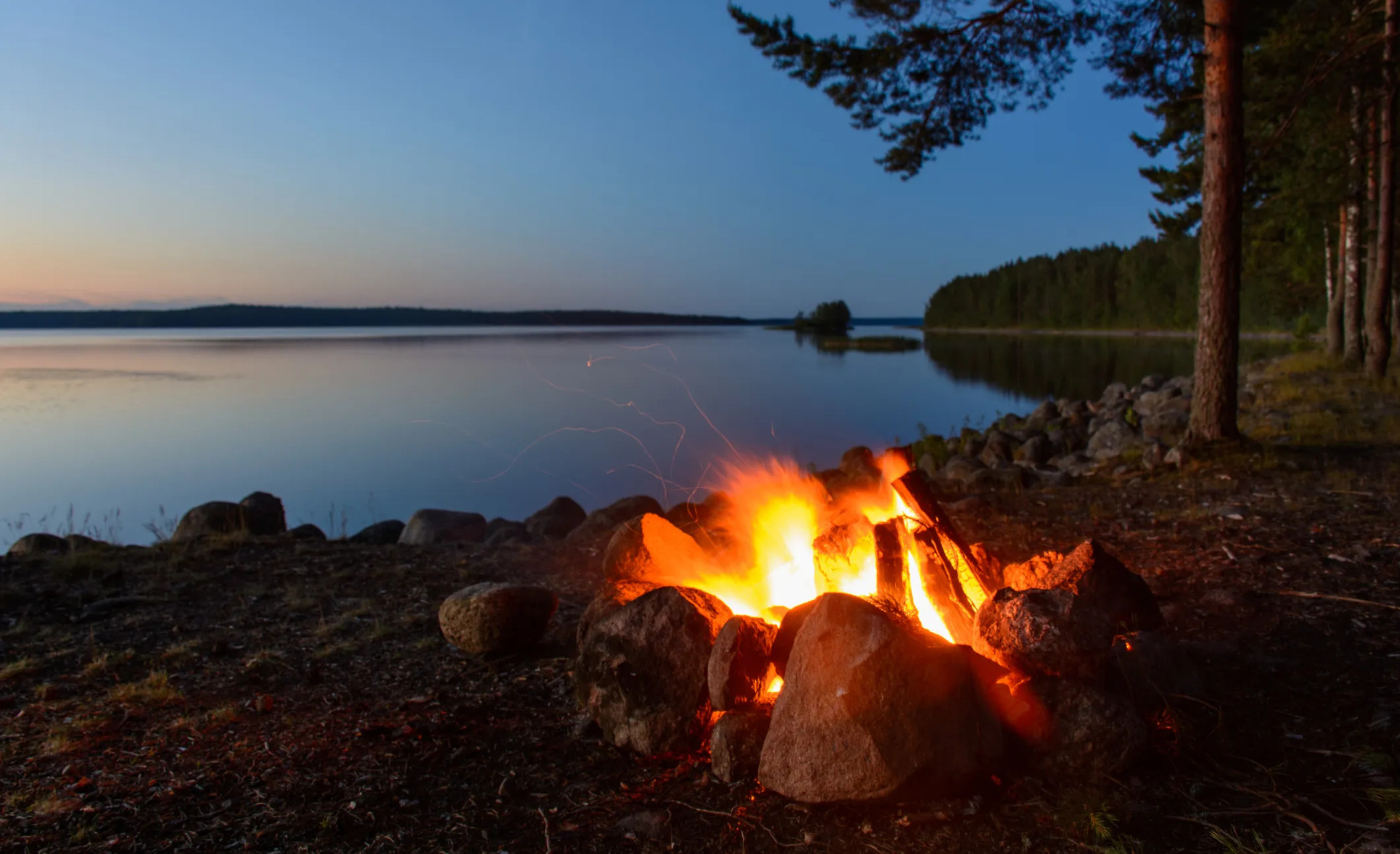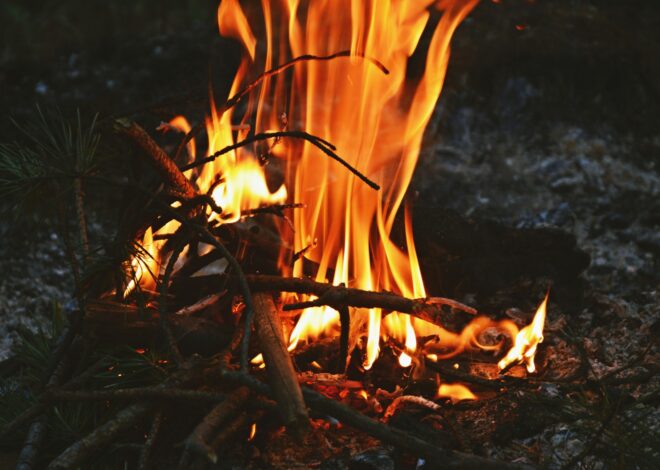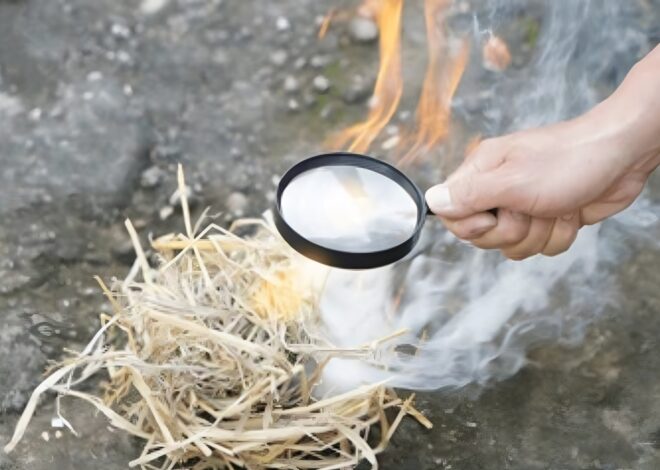
How To Start A Survival Fire
In this guide, we will walk you through everything you need to know on how to start a survival fire – from understanding different types of fires to essential tools and materials needed, step-by-step instructions, tips for maintenance, alternative methods, safety precautions, and more.
Imagine you’re out in the wilderness, surrounded by nature’s raw beauty. The sun is setting, and the temperature begins to drop. You realize that starting a fire isn’t just about warmth; it’s about survival.
Knowing how to start a fire in such situations can mean the difference between comfort and distress, safety and danger. Let’s dive into the world of mastering the art of starting a survival fire!
The Importance of Knowing How to Start a Survival Fire
Picture this: you’re camping in the wilderness, miles away from civilization. Suddenly, a storm rolls in, and darkness descends swiftly. The temperature plummets, sending shivers down your spine. In situations like these, knowing how to start a survival fire is not just a skill – it’s a lifeline.
A crackling fire provides warmth and light against the cloak of night, keeping predators at bay and offering a sense of security amidst the unknown. It can boil water for safe consumption, cook food for nourishment, signal for help with its smoke or flames.
The ability to start a fire with limited resources showcases resourcefulness and adaptability – crucial traits in survival scenarios where basic necessities are scarce. Whether you’re an avid outdoor enthusiast or an occasional camper, mastering the art of starting a survival fire is an essential skill that could save lives when faced with unforeseen challenges in the great outdoors.
Understanding the Different Types of Fires
When it comes to survival fires, not all fires are created equal. Understanding the different types of fires is crucial for your success in starting and maintaining a fire in the wilderness.
There’s the teepee fire, where kindling is arranged like a cone or teepee structure. This type of fire provides good ventilation and burns hot and fast.
Then there’s the lean-to fire, ideal for windy conditions. In this setup, larger logs are placed against a standing pile of kindling to shield it from wind.
The log cabin fire involves stacking wood crisscrossed like a log cabin structure around kindling in the center. This design allows for sustained burning as air flows through easily.
We have the pyramid fire, where larger logs are stacked perpendicular to each other over a base of tinder and kindling formed into a pyramid shape.
Each type has its advantages depending on your situation and environment – knowing them could be what keeps you warm at night!
Essential Tools and Materials Needed to Start a Fire
When it comes to starting a survival fire, having the right tools and materials is crucial. One essential item you’ll need is a reliable fire starter, such as waterproof matches or a ferrocerium rod. These tools can withstand various weather conditions and are perfect for igniting your fire quickly.
Additionally, having dry tinder like cotton balls, birch bark, or dryer lint will help ignite the initial flames. It’s also important to gather different sizes of fuel wood beforehand to sustain your fire once it’s lit. This includes kindling for getting the fire started and larger logs for long-lasting warmth.
A sturdy knife can be handy for processing wood and making feather sticks to increase surface area for ignition. And don’t forget about a compact folding saw for cutting through thicker branches if needed. Carrying a small metal container to create char cloth or store embers can be incredibly useful in maintaining your fire.
By ensuring you have these essential tools and materials on hand, you’ll be better prepared to start a successful survival fire in any situation.
Step-by-Step Guide on Starting a Fire in the Wilderness
Picture yourself in the midst of a dense wilderness, surrounded by towering trees and a serene silence. The need to start a fire for warmth or cooking becomes crucial. To begin, gather dry twigs, leaves, and small branches for your base material. Remember, the smaller the pieces, the easier it is to ignite them.
Create a small nest out of tinder – such as dried grass or bark shavings – at the center of your fire pit. This will catch fire quickly when ignited and help spread flames to larger fuel sources.
Using a fire starter like matches or a lighter (if available), carefully light the tinder nest with steady hands. Once lit, gently blow on the embers to encourage combustion without suffocating the flame.
Gradually add larger sticks and logs as your fire grows stronger and more stable. Maintain a safe distance while feeding it to prevent accidental burns.
Continue nurturing your fire until it reaches a sustainable size for your needs in the wilderness. Remember always to monitor its progress closely and keep water nearby for safety measures.
Tips and Tricks for Maintaining and Controlling a Survival Fire
Maintaining and controlling a survival fire is crucial for your safety in the wilderness. One important tip is to always keep an eye on the fire and never leave it unattended. If the flames start to get too high or out of control, gently blow on them to help regulate the airflow and intensity.
Adding small amounts of fuel gradually can help sustain the fire without overwhelming it. Green wood should be avoided as it creates excess smoke and can smother the flames. Additionally, creating a barrier around the fire with rocks or dirt can prevent it from spreading uncontrollably.
To maintain a steady heat source, periodically feed the fire with dry kindling or tinder. Keeping a supply of water nearby is essential for emergencies and ensuring you can extinguish the flames completely when needed.
By following these tips and tricks, you’ll be better equipped to manage your survival fire effectively while enjoying its warmth and benefits in nature’s embrace.
Alternative Ways to Start a Survival Fire
When it comes to starting a survival fire, having alternative methods up your sleeve can be a lifesaver. One unconventional way is using a magnifying glass on a sunny day to focus sunlight onto tinder. The intense heat generated can ignite the material and get your fire going.
Another option is using steel wool and a battery. By touching the positive and negative terminals of the battery to the steel wool, you create sparks that can catch on flammable materials like dry leaves or paper.
For those with hand sanitizer in their survival kit, this can act as an accelerant when combined with tinder. Simply squeeze some hand sanitizer onto your kindling before lighting it up for a quick flame.
If you have access to a car battery, jumper cables, and some wire wool, you can create sparks by connecting the wires to both terminals of the battery through the wire wool.
Exploring these alternative methods may come in handy when traditional fire-starting tools are not available.
Safety Precautions and Proper Disposal of Ashes
When it comes to starting a survival fire, safety should always be your top priority. Before you even think about lighting a fire, make sure you are in a safe location with no overhanging branches or dry grass nearby. Clear the area around your fire pit to prevent any accidental spreading of flames.
Always have a source of water close by in case the fire gets out of control. This could be a water bottle, bucket, or nearby stream. Never leave your fire unattended and always fully extinguish it before leaving the site.
Proper disposal of ashes is crucial for both environmental reasons and safety. Allow the ashes to cool completely before handling them. Use a shovel to scoop up the ashes and scatter them in a wide area away from your campsite.
Remember that even when you think the flames are gone, hot embers can still be present within the ash pile. By following these safety precautions and proper disposal methods, you can enjoy your survival fire while minimizing risks and respecting nature’s balance.
Conclusion
In the unpredictable wilderness, knowing how to start a survival fire is not just a skill but a crucial element for staying safe and comfortable. By understanding the different types of fires, having the essential tools and materials ready, following a step-by-step guide, and implementing tips for maintenance and control, you can ensure that you are prepared for any situation that may arise.
Remember to always prioritize safety when starting a fire in the wild. Be mindful of your surroundings, follow proper disposal techniques for ashes, and consider alternative methods if needed. With practice and knowledge on your side, mastering the art of starting a survival fire will give you confidence in facing whatever challenges nature presents.
Stay informed, stay prepared, and stay safe out there!




Hi Jack –
Every so often we venture out into the wilderness to slow life down. Making a fire is fundamental and a lifesaving skill to have. I did not know hand sanitizer could ignite a fire but now I know how to carry it in a survival kit. Taking items which can help you create a fire is key because you’re one step ahead of some people.
This is an article that I would highly recommend to family and friends.
Cheers,
G
Hey Godwin,
Thank you for stopping by and sharing your thoughts on how to start a survival fire. Knowing how to start a fire is a crucial skill if you want to survive. A fire can be used for warmth, light, cooking and signaling for help. Knowing how to start a fire without matches or a lighter is an advanced survival skill everybody should know.
If you are interested in learning how to light a fire without matches CLICK HERE. There are several methods to choose from. ‘ll give you a little tip. Make sure you add a magnifying glass in your survival kit. It will come in handy if you don’t have matches or a lighter with you.
Best wishes,